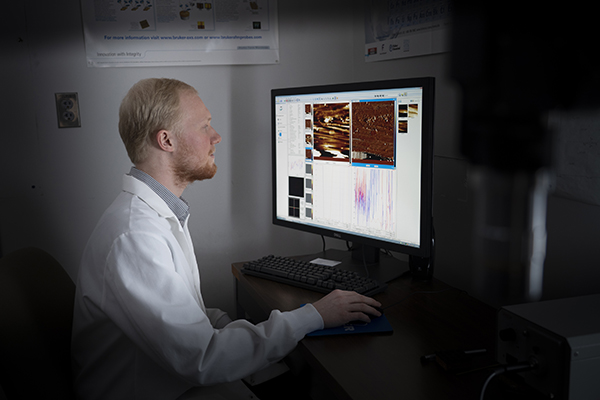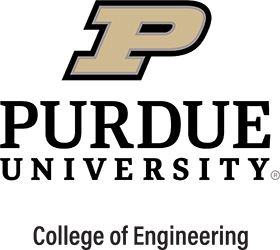Chronic ailments such as diabetes and kidney disease take a toll on bone strength that affects a patient's quality of life and pose a combination of mysteries John Damrath wants to solve. That mission, he has learned, demands skills spanning biology, chemistry and engineering, as well as a network of mentors and collaborators assembling pieces of the puzzle at multiple locations.
On top of that, he believes the breadth and depth of his training will prepare him effectively in all three areas of interest he has come to embrace since his first steps toward becoming a physician. That trio consists of laboratory research, clinical experience and teaching in a college or medical school.

John, as an MD/PhD student in biomedical engineering on the IUPUI campus in Indianapolis, says he has found an ideal hub with all the interdisciplinary spokes needed to advance his career - the world-class resources in Indiana University School of Medicine/Purdue University Medical Scientist Training Program (MSTP).
Purdue's Weldon School of Biomedical Engineering, a dynamic next step following John's undergraduate degree in biomedical engineering from the University of Michigan, contributes its strong research expertise in biomechanics to his outside-the-box inquiries into bone strength.
IU School of Medicine brings to his education a clinical mentor, Dr. Sharon Moe, the school's division chief of nephrology (a specialty focused on kidney function) and an advocate for interaction among engineers, scientists and everyday practitioners.
The Indianapolis location provides access to "so many opportunities" to work with clinics in numerous centers of distinctive expertise, John says. As a part of his thesis work, he is also working closely with physician-scientists via another hospital collaboration cultivated in line with his research - at the Columbia University Irving Medical Center in New York, where treatment programs for hemodialysis patients provide the opportunity for John to experience and perform translational research.
MSTP's combination of people and perspectives topped John's list of possible graduate programs when he realized "the tight connection between the engineering school and the medical school," he says. "It really speaks to the personality of this institution."
The breadth of John's training goes hand-in-hand with the depth of his enthusiasm to probe, and hopefully prevent, bone fractures which occur for reasons not well predicted by conventional assessments. Bone density tests may not tell the whole story in the presence of certain chronic diseases.
"We approach the problem by not only looking at the quantity of bone, but also the quality of bone," John explains. "We look at the actual properties of the bone tissue from an engineering perspective. How stiff is the bone? Is it able to withstand a high enough load?" These questions require chemical, mechanical and material insights, reflecting the need for targeted but comprehensive laboratory pursuits, he says.

The compassionate curiosity driving his medical studies is pivotal for various reasons, not the least of which was his early awakening "when my younger sister was born extremely prematurely" and was held in an incubator for months. John's parents recall that, every day at the hospital, his fascination with the equipment, the endless series of tests and the human body's structure were inseparable from his urgent concern for his sister.
The clinical work he can do in a variety of settings allows for interaction with patients, obtaining biopsy bone specimens which will go back to his lab. John also plans to teach in the future, aiming to encourage the development of physicians who understand and think critically about the science."
Following the MSTP, John plans to move from his research commitments to residency studies, likely specializing in nephrology or endocrinology. "My long-term goal is to start a research lab that answers questions driven by my clinical experiences."
All of these aspirations find a comfortable home in the MSTP. And there's even more, thanks to the extracurricular activities abounding in the joint Indiana University-Purdue community. Outside of the lab, John can be found performing with Orchestra at Indiana University School of Medicine, in which he plays the French horn and serves on the executive board. The orchestra's concerts and rehearsals play a large role in inspiring John's search for solutions.
"Being an MD/PhD student is a lot like being in an orchestra," he says. "My goal is to bring multiple players - science, engineering, and medicine - onto one stage to change the way we think about health and disease, and I am confident that the training environment between IU School of Medicine and Purdue University is the key to accomplish this."


